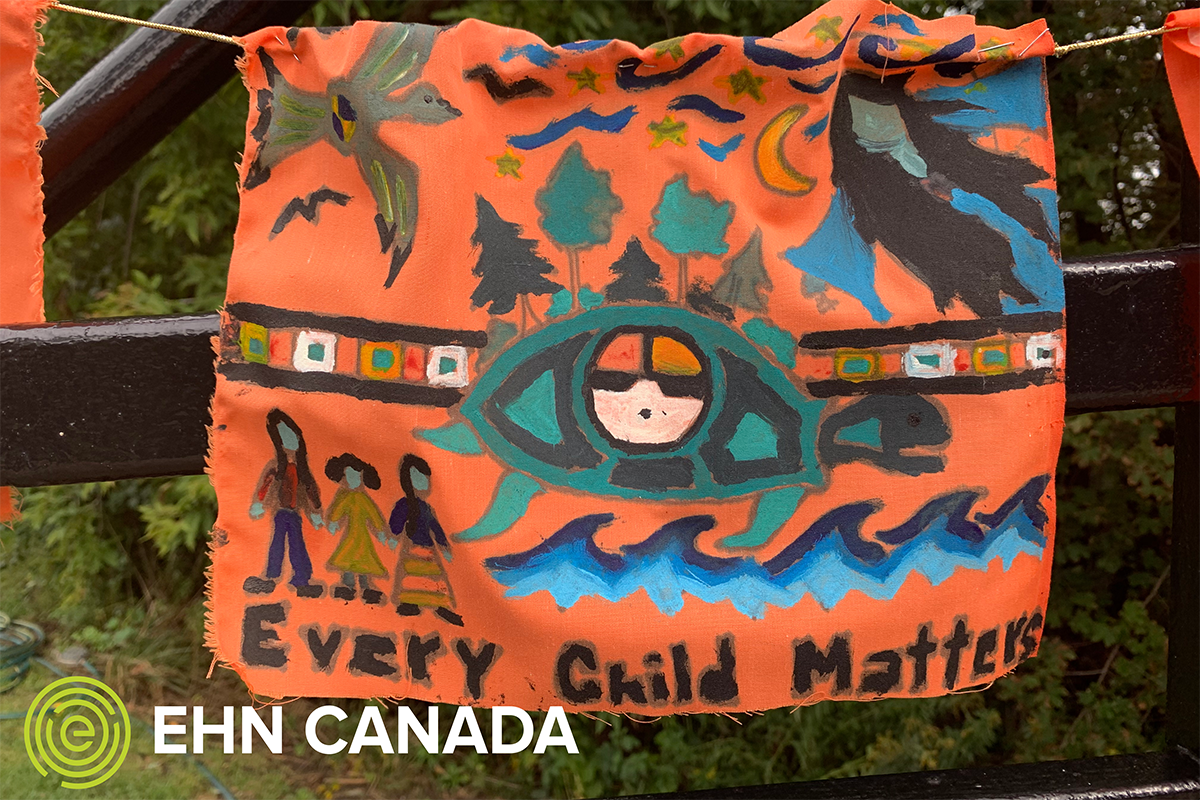If you’ve been paying attention to the news over the last while, you’ll be aware that Canada is marking a milestone this month. The country will recognize September 30th as the first ever National Day for Truth and Reconciliation.
Granted, there’s been a lot in the media when it comes to the federal scene, not the least of which are Indigenous issues. Whether we’re talking about those on First Nations reserves not having clean drinking water, or murdered and missing Indigenous women, the national news feed is filled with First Nations, Inuit and Metis concerns.
Therefore, it stands to reason that Canada’s federal government would declare a national day to commemorate the country’s Aboriginal peoples. Let’s take a closer look at what led up to the National Day for Truth and Reconciliation and what it means for all Canadians.
How did the National Day for Truth and Reconciliation come to be?
The timing of the new legislation proclaiming September 30th as a statutory holiday is significant.
This year’s initiative to declare a National Day for Truth and Reconciliation was driven primarily by the discovery on May 27th of the remains of Indigenous children that had attended a residential school. Two hundred and fifteen unmarked graves were found on the former site of Kamloops Residential School on Tk’emlups te Secwepemc First Nation in British Columbia.
Canada’s Truth and Reconciliation Commission, formed in 2008 to document residential school system history and its impacts on Indigenous peoples, was told 51 students died at Kamloops. However, the local First Nation knew the number was far higher, as the use of ground-penetrating radar in Kamloops proved.
By the end of June 2021, hundreds more unmarked graves were found at or near two other former residential schools – St. Eugene’s in Saskatchewan and Marieval in British Columbia. As the body count climbed to more than one thousand, Indigenous and non-Indigenous leaders across Canada began to speak out about the injustices of the residential school system. Public pressure also grew, and federal lawmakers moved to make September 30th a National Day for Truth and Reconciliation.
When was the federal holiday created?
Legislation that launched the National Day for Truth and Reconciliation passed fairly quickly after the discovery of the mass graves at Canadian residential schools such as Kamloops. Bill C-5 formally became law on June 3rd, 2021 and came into force on August 3rd. Members of Parliament voted unanimously to finish debating quickly so the bill could be fast-tracked through the Senate.
With this new designated day for recognition, the federal government is signalling that they’re taking the tragic legacy of residential schools and the ongoing impact for Indigenous individuals very seriously. September 30th, 2021 provides an occasion for all Canadians to remember the harm done to thousands of children forced into residential schools, and the lasting inter-generational trauma caused for their families.
Having a statutory holiday to mark the impact of this aspect of Canadian history allows individuals across the country to come together to publicly pay tribute to residential school survivors and victims. It’s a time to honour the memory of the children whose bodies have been found in unmarked and mass graves, reaffirming that every child matters.
In fact, the creation of the holiday stems from the Canadian movement entitled “Every Child Matters”. This campaign developed during the years that the Truth and Reconciliation Commission was collecting personal painful stories from some 7,000 residential school survivors and almost 5 million related records.
What is the significance of September 30?
September 30, 2021 will be the first chance the country and its occupants have to formally recognize and commemorate the history of the residential school system. This date is significant because it’s been known in recent years across Canada as Orange Shirt Day – when all Canadians are encouraged to wear orange in honour of residential school survivors.
This annual event grew from a reunion and commemorative project in May 2013 in Williams Lake, British Columbia related to the St. Joseph Mission (SJM) Residential School operated from 1891 to 1981. Orange Shirt Day was inspired by a moving story told by former student, Phyllis (Jack) Webstad, about how the new orange shirt her grandmother gave her to wear at school when she was age six was taken from her.
Wearing orange is designed to promote conversations between First Nations, governments and local communities. Orange Shirt Day demonstrates that individuals who are First Nations, Inuit and Metis matter. In turn, it assists to build bridges and further reconciliation efforts.
The creation of the National Day for Truth and Reconciliation was one of 94 separate recommendations, or calls to action, made by the Truth and Reconciliation Commission of Canada in 2015.
The TRC’s recommendations were made “In order to redress the legacy of residential schools and advance the process of Canadian reconciliation . . .” Call to Action number 80 reads:
“We call upon the federal government, in collaboration with Aboriginal peoples, to establish, as a statutory holiday, a National Day for Truth and Reconciliation to honour Survivors, their families, and communities, and ensure that public commemoration of the history and legacy of residential schools remains a vital component of the reconciliation process.”
It shouldn’t be forgotten that residential schools were in operation for well over a century, housing children from four to 16 years of age. Canada’s last residential school closed its doors in 1996.
Is September 30 a statutory holiday in Canada?
September 30th has been designated as a national holiday and employees that are federally-regulated within the meaning of the Canada Labour Code will have a paid holiday. This refers to workers in both the public and private sectors, including in industries like banking, broadcasting, postal delivery and air and rail transportation.
It’s been left up to individual provinces and territories to decide whether they plan to recognize the National Day for Truth and Reconciliation. Only seven jurisdictions will offer partial acknowledgement. British Columbia, Manitoba, Nova Scotia, Yukon and the Northwest Territories confirm they’ll give provincial employees a paid holiday on September 30th. In Manitoba it will be considered a “day of observance,” in essence, having the same effect as a statutory holiday.
While New Brunswick and Saskatchewan will not observe the date as a holiday, certain workers in these provinces will have a paid day off. Namely, city staff in Moncton, Regina and Saskatoon as well as University of Saskatchewan employees.
In Alberta, Quebec and Ontario, the National Day for Truth and Reconciliation will not be named as a statutory holiday. As of September 20, the other provinces were still deciding.
How to observe the National Day for Truth and Reconciliation?
On September 30th, there are many ways to pay tribute to residential school survivors and the numerous children who never made it home to their families and communities.
Canada’s Aboriginal inhabitants – First Nations, Inuit and Metis – live in cities and on reserves across the country. This means there are often Indigenous Friendship Centres and similar organizations in off-reserve communities. These centres are organizing individual methods of observance for September 30th. Check with your local centre to see what is offered in your area. You can also check in with larger institutions to see if they are hosting commemorative events. Attending organized observances is a good way to mark the first National Day for Truth and Reconciliation.
Educating ourselves further about the history and legacy of the residential school system is another route to remembrance. These days, there’s a plethora of information that’s readily accessible online and at in-person learning forums – from First Nations educational resources to university-level courses and much more.
Of course, wearing something orange for Orange Shirt Day 2021 is a very simple and recognizable approach to observe the date and acknowledge the trauma for residential school survivors. You can also purchase items such as bumper stickers and flags to display, perhaps with the ‘Every Child Matters’ logo.
Conclusion
It’s estimated that approximately 6,000 children died while attending residential schools, despite incomplete official records making this number difficult to determine. Those young ones who made it home to their communities are now parents and grandparents. For years they’ve told tales of terrible abuse at the hands of the Catholic church and other religious organizations that operated these institutions.
In the words of the Canadian government, September 30th “seeks to honour First Nations, Inuit and Metis survivors and their families and communities, and to ensure that public commemoration of their history and the legacy of residential schools remains a vital component of the reconciliation process.”
The National Day for Truth and Reconciliation is an important beginning for the country to heal.
Residential school survivors and others wanting support can call the National Indian Residential School Crisis Line at 1-866-925-4419.
Sources:
Dickson, Courtney and Watson, Bridgette. (2021 May 27) Remains of 215 children found buried at former B.C. residential school, First Nation says. CBC News. https://www.cbc.ca/news/canada/british-columbia/tk-eml%C3%BAps-te-secw%C3%A9pemc-215-children-former-kamloops-indian-residential-school-1.6043778
Dhir, Arjun. (2021 September 9) Canada: An Overview of Canada’s New Statutory Holiday: The National Day For Truth And Reconciliation. https://www.mondaq.com/canada/government-contracts-procurement-ppp/1109832/an-overview-of-canada39s-new-statutory-holiday-the-national-day-for-truth-and-reconciliation
Globe staff (2021 July 16) Kamloops, St. Eugene’s, Marieval: What we know about residential schools’ unmarked graves so far. The Globe and Mail. https://www.theglobeandmail.com/canada/article-residential-schools-unmarked-graves-st-eugenes-marieval-kamloops/
Orange Shirt Society. The Story of Orange Shirt Day. https://www.orangeshirtday.org/about-us.html
Reynolds, Christopher. (2021 May 29) MPs pass bill creating national day for truth and reconciliation. CBC News. https://www.cbc.ca/news/canada/manitoba/national-day-truth-reconciliation-bill-canada-1.6045609
The Truth and Reconciliation Commission of Canada. (2015) The Truth and Reconciliation Commission of Canada: Calls to Action. https://www2.gov.bc.ca/assets/gov/british-columbians-our-governments/indigenous-people/aboriginal-peoples-documents/calls_to_action_english2.pdf
Union of Ontario Indians (2013) An Overview of the Indian Residential School System. https://www.anishinabek.ca//www/wp-content/uploads/2016/07/An-Overview-of-the-IRS-System-Booklet.pdf
Wapikoni. (2020 September 29) EVERY CHILD MATTERS: AN IMPORTANT SOCIAL MOVEMENT. http://www.wapikoni.ca/actualities/news/every-child-matters-an-important-social-movement




